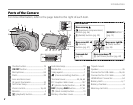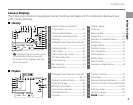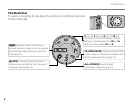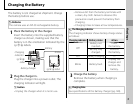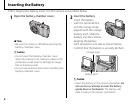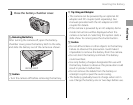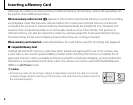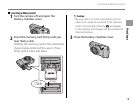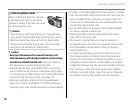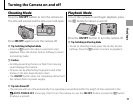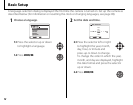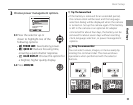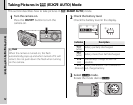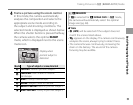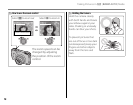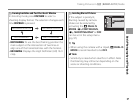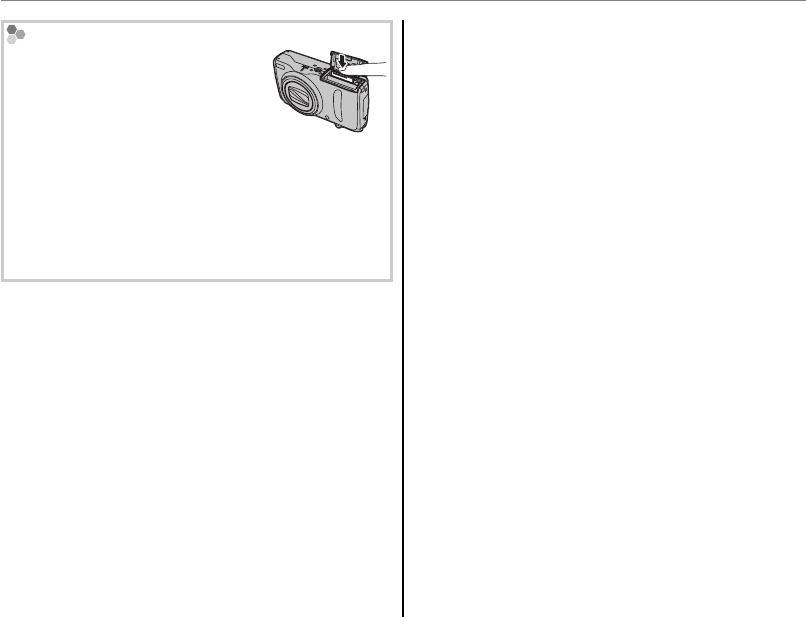
10
Inserting a Memory Card
Removing Memory Cards
After confirming that the camera
is off, press the card in and then
release it slowly. The card can now
be removed by hand.
C Caution
• The memory card may spring out if you remove
your finger immediately after pushing the card in.
• Memory cards may be warm to the touch after
being removed from the camera. This is normal
and does not indicate a malfunction.
C Caution
• Do not turn the camera off or remove the memory card
while the memory card is being formatted or data are being
recorded to or deleted from the card. Failure to observe
this precaution could damage the card.
• Format SD memory cards before first use, and be
sure to reformat all memory cards after using them
in a computer or other device. For more information
on formatting memory cards, see page 101.
• Memory cards are small and can be swallowed;
keep out of reach of children. If a child swallows a
memory card, seek medical assistance immediately.
• miniSD or microSD adapters that are larger or smaller
than the standard dimensions of an SD card may not
eject normally; if the card does not eject, take the
camera to an authorized service representative. Do
not forcibly remove the card.
• Do not affix labels to memory cards. Peeling labels
can cause camera malfunction.
• Movie recording may be interrupted with some
types of SD memory card.
• The data in internal memory may be erased or
corrupted when the camera is repaired. Please note
that the repairer will be able to view pictures in
internal memory.
• Formatting a memory card or internal memory in
the camera creates a folder in which pictures are
stored. Do not rename or delete this folder or use a
computer or other device to edit, delete, or rename
image files. Always use the camera to delete pictures
from memory cards and internal memory; before
editing or renaming files, copy them to a computer
and edit or rename the copies, not the originals.



